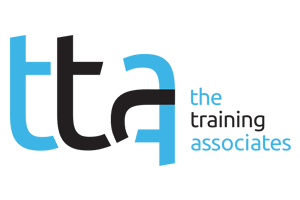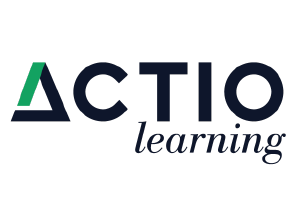In today’s rapidly changing job market, it’s essential to keep employee skills up to date. According to TalentLMS and Workable’s research, 71% of employees report needing to learn new skills to stay ahead of the competition. Despite this need, they also face significant challenges in their upskilling efforts.
This article explores the importance of upskilling, the core upskilling challenges and effective strategies to overcome them.
The Importance of Upskilling
The benefits of upskilling extend beyond individuals to the entire organization.
A well-trained workforce is more productive, innovative and adaptable. Employees invested in continuous learning are better equipped to tackle new challenges and embrace change. This agility is necessary in the current business environment, where keeping up with industry trends makes the difference between success and setbacks.
Also, upskilling improves employee satisfaction and retention. Consider this: 48% of employees surveyed would switch to a new job if offered skills training opportunities. People who see their companies committed to their growth and development are more likely to feel valued and show loyalty. This reduces turnover rates and the associated costs of hiring and training new employees.
Common Upskilling Challenges
Nearly 25% of employees face challenges with their upskilling and reskilling efforts. The main difficulties include a lack of time, difficulty balancing training with work responsibilities and a limited range of available skills.
Lack of Time
Demanding work schedules often leave employees with little time to engage in training, making upskilling seem nearly impossible. Many people juggle work tasks with personal commitments, leaving little room for additional learning. This time crunch leads to frustration and makes people feel overwhelmed. Which, in turn, discourages employees from pursuing further learning and development (L&D) opportunities.
Balancing Work and Training
The struggle to balance job responsibilities with training commitments is another significant challenge. Employees may fear that investing time into learning new skills will cause them to fall behind on work tasks, so they don’t. This creates stress and makes work and training efforts less effective. It’s a Catch-22 situation; employees need to upskill to perform better at work, but work demands prevent them from upskilling.
Limited Range of Skills
Employees often find that the training programs being offered don’t cover the skills they need, particularly in areas such as emerging technologies or industry-specific knowledge. This gap can lead to frustration and disengagement, as people are eager to learn but cannot find the resources to do so.
Effective Strategies for Improving Upskilling
The solution to overcoming these challenges lies in implementing effective strategies to make upskilling more accessible and impactful for employees.
Here are several approaches that can help:
1. Create personalized learning paths.
Upskilling through personalized learning paths allows employees to focus on boosting the skills they need most, making training more relevant and efficient.
Advanced AI-powered learning management systems (LMSs) can assess individual skills gaps and recommend tailored learning modules to address them. They analyze an employee’s current skill set, performance metrics and career goals in detail. Based on this data, LMSs create personalized learning paths with specific courses, resources and milestones. This approach saves time and ensures that employees get targeted training that fits their needs and roles.
2. Offer flexible learning options.
Flexibility is key to making upskilling feasible for busy employees.
Flexible learning options, like self-paced online training or microlearning, significantly change how employees approach learning. Self-paced training allows employees to adapt learning to suit their schedules and learning styles. Microlearning involves short, focused learning sessions that are particularly effective for busy professionals. These bite-sized lessons can be included in daily routines, making continuous development more manageable.
Also, mobile learning platforms enable employees to learn on the go, enhancing learning opportunities without compromising work responsibilities.
3. Recognize and reward.
Recognizing and rewarding employees for their upskilling efforts is a powerful motivator. Implementing recognition and reward programs empowers and encourages employees to pursue continuous learning. These could be formal recognition initiatives (for example, awards and certificates) or other rewards like bonuses, promotions or extra time off.
This positive reinforcement boosts morale, creates a continuous learning culture and demonstrates the organization’s commitment to employee growth and success.
4. Provide feedback and continuous improvement.
A successful upskilling program requires a feedback loop. Organizations must create mechanisms, such as surveys or focus groups, for employees to give feedback on training programs. This feedback helps organizations identify areas for improvement and ensuring that training remains relevant and effective.
Regularly evaluating and updating training programs based on employee feedback and industry trends demonstrates a commitment to continuous employee development and helps maintain high-quality learning experiences.
Taking the First Steps
Before implementing these strategies, organizations should assess their current upskilling efforts and identify areas for improvement. Conducting an internal audit of existing training programs to identify gaps and researching new tech, tools and methodologies are crucial first steps.
Once these gaps and opportunities have been identified, organizations can develop or improv their upskilling programs using the strategies mentioned above. Clear communication of intentions, changes and benefits to employees will also be essential to encourage participation.
Embrace Upskilling for a Brighter Future
Upskilling isn’t just a trend; it’s a necessity.
By navigating the challenges employees face and implementing effective strategies, organizations can create a continuous learning culture. Personalized learning paths, flexible options, recognition and feedback are key to making upskilling work.
Leaders should take definitive steps toward these goals. Act and invest in your team’s growth and development by embracing upskilling to unlock your people’s fullest potential. The benefits? A competitive, satisfied and resilient workforce. And a brighter, more innovative future for all.






